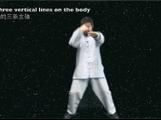I recently decided that it was time for me to start learning Cannon Fist. Although I learned it from my first Chen Taijiquan teacher, I have happily forgotten it since starting the Practical Method in 2011.
Today, I met a man who noticed me reviewing Cannon Fist in an empty hallway of a nearby mall.
He engaged me with a playful attempt to spar, and we talked for awhile. After sharing that I was practicing Chen Style Taijiquan Practical Method, he asked, “What is the essence?”
Since I haven’t been teaching for awhile, I found that I didn’t have a good, concise answer. I provided a lengthy, ineloquent answer. Because he genuinely sounded interested, and I am ready to teach again, I wanted to share the answer I came up with on the way home.
What is the Essence of the Practical Method?
I think the answer boils down to three things. Silly me for not starting my answer with the following:
- Don’t Move
- Open Kua
- Rotate
Every fellow student will probably say, “Duh!”, but I am clearly out of practice in sharing the Practical Method. I have watched from afar as Master Chen works on promoting the Practical Method. It’s time for me to do my part.
I will write more on my understanding of those three rules.
What is your answer to the question? Please comment.



{ 4 comments… read them below or add one }
My answer is separation of yin and yang.
Thank you, Kelvin. That is a much better answer. My answer then becomes how to achieve yin-yang separation.
I definitely have some knowledge review to do.
“Open the Kua, Rotate and Don’t Move” is the three stages of the Practical Method progression.
That makes sense, since I can’t Rotate until I Open the Kua, and I will move until I Rotate.
How do we move through those stages? I understood that if we start with Don’t Move, then that will help us Open the Kua which will allow us to Rotate.